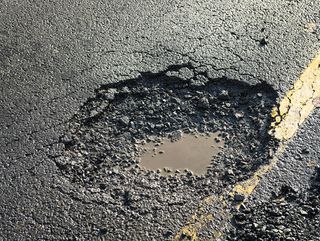How ground source heat pumps could be used to stop potholes in your road
The heating technology could be used to regulate the temperature of roads

A project that will trial the use of geothermal energy as a means to regulate the temperature of UK roads has been announced.
The initiative could keep roads from melting in the summer and freezing in the winter, therefore preventing the creation of potholes and improving road safety.
Researchers from National Highways and the University of Surrey will useground source heat pumpsto cool roads in the summer and warm them in the winter.
Ground source heat pumps would be installed under the UK's road network
Project lead Dr Benyi Cao’s team plans to work with advanced materials engineering company Versarien to develop a new graphene-enhanced microcapsule that can dig into the soil beneath the surface when roads are resurfaced to improve heat conduction and storage.
The researchers will also create a laboratory-scale model road segment with a heat pump in the University of Surrey’s advanced geotechnical laboratory. The model will allow Cao’s team to evaluate the thermal performance and resilience of roads under controlled climatic and traffic loads.
Homebuilding and Renovating has an extensive guide oninstalling a ground source heat pump.
Heat would be used to stop potholes and heat homes
“At the moment, a typical motorway or A-road surface lasts 20 years, but this is likely to reduce as extreme weather increases,” Dr Cao said. “However, by regulating the temperature of road surfaces, they should last significantly longer. Aside from the safety benefits and reduction to car damage, think of the reduction in expensive, inconvenient roadworks.”
He adds that potholes on England’s major roads have caused 5,000 injuries since 2018 and the nation spent £1.2bn on road maintenance and repair, with the Asphalt Industry Alliance (AIA) estimating that a further £14bn is needed to fix the backlog of repairs needed on British roads – which would take 11 years to complete.
While half (51 per cent) of local roads are reported to be in good structural condition, the remaining 100,000 miles could continue to deteriorate to the point of needing to be rebuilt within the next 15 years, the report warned.
In addition, the repairs could have a damaging impact on the environment, as current road repair technology has been estimated to create 700,000 tonnes of CO2 each year.
£800,000 study will test how feasible project might be
The project has been awarded a £800,000 research fellowship from the Royal Academy of Engineering, with the hopes it could improve how major roads across the UK are maintained and upgraded – even as climate change “increases the challenge of keeping them fit for purpose,” the university said.
The final step of the project aims to introduce full-scale field trials on UK roads and conduct a full life cycle assessment to understand the environmental and financial costs of thermo-active roads.
“Climate change poses an extra threat to our roads,” Cao said. “Thermo-active roads could help mitigate this.
“They could be introduced gradually as resurfacing takes place, so wouldn’t cause any extra disruption for motorists. I think there will be long-term benefits to drivers and taxpayers.”
For more information on ground source heat pumps, read our article outlininghow much space does a ground source heat pump need.
Get the Homebuilding & Renovating Newsletter
Bring your dream home to life with expert advice, how-to guides and design inspiration, direct to your inbox.
Sam is based in Coventry and has been a news reporter for nearly 20 years. His work has featured in the Mirror, The Sun, MailOnline, the Independent, and news outlets throughout the world. As a copywriter, he has written for clients as diverse as Saint-Gobain, Michelin, Halfords Autocentre, Great British Heating, and Irwin Industrial Tools. During the pandemic, he converted a van into a mini-camper and is currently planning to convert his shed into an office and Star Wars shrine.
Most Popular

BySam Webb

BySam Webb

BySam Webb
Bring your dream home to life with expert advice, how-to guides and design inspiration, direct to your inbox.
Thank you for signing up to Homebuilding. You will receive a verification email shortly.
There was a problem. Please refresh the page and try again.
